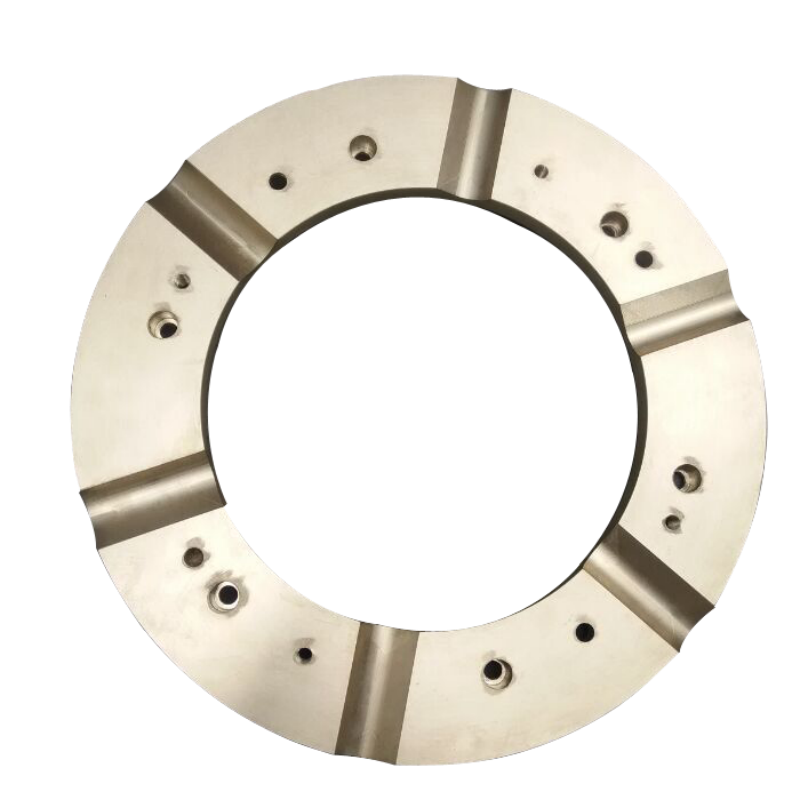The working principle of thrust bearings is mainly through various ways to form a bearing medium (such as oil film, gas film, etc.) between the thrust surfaces of the bearing, so as to withstand the axial load and limit the axial runout of the shaft. The following is the working principle of several common thrust bearings:
Liquid dynamic pressure thrust bearing:
When this kind of bearing is in operation, the journal rotation will drive the lubricant into the gap between the thrust disk and the thrust block. Due to the rotational speed of the journal and thrust disk and thrust block geometry, so that the lubricant in the gap to form a convergent wedge-shaped space.
As the journal continues to rotate, the lubricant is continually squeezed within the wedge-shaped space, thus generating oil pressure. This oil pressure can balance the axial force, so that the thrust disk and thrust block are in liquid friction state, reducing friction and wear to ensure the normal operation of the thrust bearing.
Liquid hydrostatic thrust bearing:
Rely on the external hydraulic system to supply pressure oil between the journal and the bearing, so that the journal and the bearing are separated. Inside the bearing, there are usually a series of oil cavities or oil channels, pressure oil into these oil cavities or oil channels, will form a layer of oil film with a certain pressure between the journal and bearing.
This oil film can withstand the axial load, the journal will float, so that the journal in a variety of loads and speeds are completely in the liquid friction. Hydrostatic thrust bearings have the advantages of high load carrying capacity, low frictional resistance, high life, but need a complete set of oil supply hydraulic system.

Gas dynamic pressure thrust bearing:
Formed by the relative rapid rotation of the disk-shaped rotor fixed on the rotor shaft and the top foil. When the rotor rotates at high speed, the gas between the rotor and the top foil is brought into a converging wedge-shaped space, similar to the wedge-shaped oil film in liquid dynamic pressure bearings.
Under the action of the gas film compression effect, the pressure on both sides of the thrust disk is different, thus providing axial bearing force for the bearing, so that the bearing can withstand the axial force and maintain a stable working condition.
Magnetic thrust bearing:
Work by using the principle of mutual repulsion of homogeneous magnetic poles. In the bearing, there are respectively located in the rotor shaft of the magnetic rotor and fixed in the bearing seat of the magnetic stator. The magnetic rotor and magnetic stator are opposite to each other in the same pole. When the rotor shaft is subjected to axial force, a repulsive force is generated between the magnetic rotor and the magnetic stator.
This repulsive force can offset part or all of the axial force, thus reducing the axial load on the thrust bearing, reducing friction loss, and extending the service life of the bearing. This kind of thrust bearing is often used in the higher requirements of the working environment, such as the need for oil-free, low friction, high speed occasions.
| Previous:What is the general material of the eccentric bronze bushing of the crusher? | Next:How do slide bearing work? |




 Copyright © 2022
Copyright © 2022